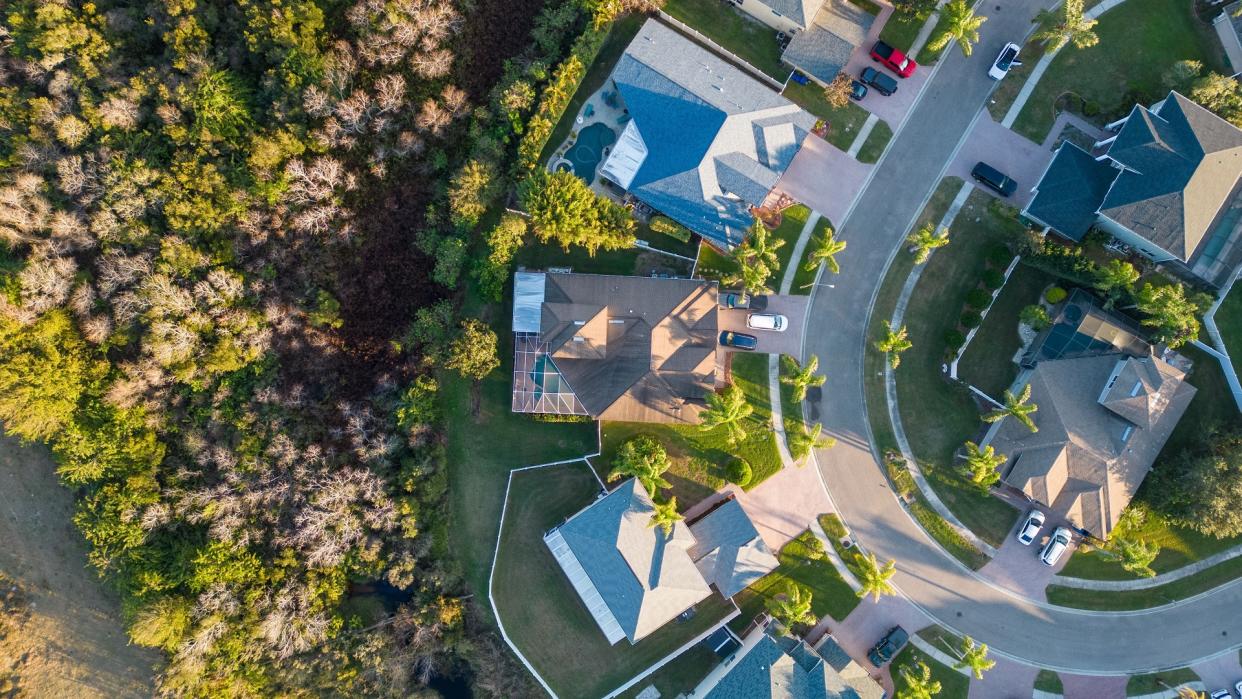5 Key Signs Your Neighborhood Is Too Expensive For Your Budget

Housing prices have been a hot topic lately among both homebuyers and renters. But there are costs you need to consider that extend far beyond your monthly rent or mortgage payment.
These added charges could increase to a point where your neighborhood becomes too expensive for your budget. We’ll discuss five tell-tale signs that you’re getting priced out of your region and offer potential solutions to help you address the problem.
Also see the most expensive neighborhood in the U.S.
Find Out: 5 Types of Homes That Will Plummet in Value in 2024
Be Aware: 4 Genius Things All Wealthy People Do With Their Money
How To Tell Your Neighborhood Is Too Pricey
Your Property Taxes Are Increasing Rapidly
Paying your property taxes is an inevitable part of being a homeowner (or, indirectly, a renter). It’s normal for your tax bill to go up periodically to account for property value increases and pay for infrastructure improvements, like a new fire station. However, if home values spike in your neighborhood or your local government launches many new initiatives in rapid succession, you may end up with sticker shock when taxes are due.
Try This: In Less Than a Decade, You Won’t Be Able To Afford Homes in These ZIP Codes
Your Maintenance Costs Are Through the Roof
Lauren Bowling, an Atlanta-based realtor and founder of Financial Best Life, said, “Many [people] account for the monthly [mortgage] payment plus taxes and insurance in their affordability calculations, but they always forget about things like lawn care, pool maintenance and security systems for more square footage.
“The more fancy features your home offers, the more you will have to maintain on a monthly basis. If you decide to outsource, this could impact how much you pay each month.”
Your HOA Has Its Hand Out
“In condo buildings and townhome communities, [homeowner’s associations] can carry high monthly [HOA] fees for maintenance on shared amenities, but they can levy special assessments for repairs on the building. Sellers have to disclose these fees if they know about them, but a hefty assessment even a year or two after your purchase could impact your financial picture, especially if the purchase is already at the top end of your budget,” Bowling said.
The Area Is Developing Fast
Development in your area can be a good thing. After all, having the amenities you need and want near your house is convenient and enjoyable.
However, rapid development may lead to increased home prices and rental rates, which could leave you unable to afford a housing payment if you’re looking to move to the neighborhood. If you’re already a homeowner there, your area’s development efforts could drive up your residence’s value. That can be great if you want to sell it, but it could be financially painful if you have to endure ever-increasing property tax bills.
The Area Has Too Few Amenities
On the other hand, having too few amenities could cost you a lot of money. “For example, [a neighborhood may be too expensive] if the closest grocery store to where you live ends up making it so that you have to spend way more money on groceries there than if you were to have close access to a Safeway or it makes it so that you have to travel far and waste gas to get to a cheaper grocery store,” said Seamus Nally, CEO of TurboTenant.
What To Do If Living in Your Neighborhood Is Hurting You Financially
First, determine how much living in your neighborhood is stretching your budget. If you’re only off by a few dollars a month (which can add up), Bowling said to learn how to handle your own property maintenance instead of hiring someone else to do it. Nally said to find other creative places to save money, too.
However, if you’re really struggling to make ends meet, you may need to take more drastic action. “It can be difficult to discern when it’s the right time to move, especially when you factor in the costs to move, loan costs and real estate commissions. What I suggest to both readers and clients is to run the numbers of what it would cost to move and what it would cost to stay,” Bowling said.
“If the costs can be recouped in six to 12 months by moving to a lower-cost area, it could make sense financially. But with all the moving parts, the better place to start is either renting out the home or bringing on a roommate while you live there.”
How To Avoid Being Neighborhood-Poor
While you may still be blindsided by a rapidly increasing cost of living in your neighborhood, you can take steps to prepare for that possibility — especially before you move in. First, you must fully understand all of the current and potential costs of residing in the area.
“I recommend asking for minutes from the HOA’s last four meetings and an accounting of how much money they have in reserve. If reserves are low, you can bet an assessment is in your future when major repairs are needed,” Bowling said.
You could also choose to live in a backup location that’s somewhat close to your target neighborhood but much cheaper. For instance, you may want to buy a house in Lamar, Colorado, versus Denver, Colorado, to save money.
Once established in a neighborhood you love, consider setting up and funding a special savings account to pay for home maintenance bills, HOA fees, and other costs. Having the cash on hand to cover these expenses can help you feel more in control and make it easier to live within your budget.
More From GOBankingRates
This article originally appeared on GOBankingRates.com: 5 Key Signs Your Neighborhood Is Too Expensive For Your Budget
